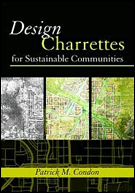As the year draws to a close, it is good to take stock of how far you’ve come with your blog. We all like to think about improvements to implement in the New Year. Rather than offering a list of to dos, I prefer to consider ways to be a marketer that highlight your accomplishments all year around. With that in mind, people notice you when you:
1. Write something fresh, unique, and useful in a human voice — this is as true of your business web site as it is of your blog. You ask time and attention of your readers and visitors, make sure they are both well spent on learning about topics and opinions they cannot find anywhere else. As more companies and businesses start considering blogs as tools to begin online conversations, it is important to remember that along with information that readers find valuable, voice plays a large role in stickiness. Make it personal and human — it is on both counts.
2. Become a trusted source of news and informed opinions — there has been a lot of discussion around the definition and meaning of expert. Personally, I prefer to become a trusted advisor, and so should you. The Internet is a great place to find information on every conceivable thing. You can run searches on virtually any topic and find dozens and dozens of entries. This is good, yet it can also overwhelm. When you act as an informed and reliable source, your experience and expertise also come through.
3. Are a good member of the community — highlight the great content that other people create, become active on other blogs and sites with comments, guest posts, interviews and volunteering advice off line. Blogging can be a solitary activity, especially when you aim to create original content. Get out there and help others and you will find more inspiration to bring what you know to the surface.
4. Show that you can be trusted and that you care — every contract that lasts is based upon trust and care. All it needs is a hand shake and a nod. If you think back at the people you most admire and respect, they are probably the ones you never doubted for a moment. Not everything is up for grabs, relationships are complex. Some things are not blog material, don’t think they should be just because you are there when they happen. Ask permission first, and provide a sanctuary where a face to face encounter is off limits. We are human after all, not everything is and should be for public consumption.
5. Put the work in — the best way to succeed is to be in it for the long term. Why would you expect time and attention from others if you haven’t put them in yourself? People often ask me how I landed a guest blogger gig at FastCompany.com, for example. I started developing off line conversations with the magazine readers seven years ago and offered free monthly events with thought leaders, CEOs and prominent businesses to a group that has grown to include more than 500 members.
6. Get the word out — this may seem a bit simplistic, yet I am surprised at how many people overlook the step. Register your blog or site URL with the search engines. Google, Yahoo, and DMOZ.org. Use a description that captures your niche market and topic — the more specific, the better in helping you stand out. If you are judicious and have asked permission first, it is good to spread the news to friends and colleagues. Remember that while it may be promotion that gets the word out, it is solid and useful content that keeps people coming back for more.
7. Listen to your customers — yes, you may think about them as readers, yet the people who happen upon your site are customers. Learn from them by engaging in the conversation when they comment. A good way to do this is user surveys. Cheap, too. Those are perfect opportunities to listen and adapt to your customers needs and wants. Granted, they visit because you already provide what is appealing and interesting to them. Yet the best way to develop relationships is to listen to what others draw from your content.
8. Think creatively — while it’s good to be a reliable and steady source of a consistent type of content, every so often it’s also great to shake things up a little. Using a different perspective, inviting a guest blogger, or recalibrating your brand (and focus) are all signs that you are putting the effort and care in what you offer.
9. Project the right image — make sure your layout, sidebars and links are all aligned with the purpose and meaning you are trying to convey with your content. Design means business, not only colors, lines and photographs. Choose the appropriate illustrations and shots, those that complement and complete your message.
10. Remain grateful and thankful for the connections you make — each comment, each email and message is a gift, take them as such. Never, ever take your customers for granted. Take the time to acknowledge people and find new ways to be of service to them.
Too often, we look to the latest social media tool or viral marketing technique to grow our blogs. In the end, however, nothing matters unless you are hitting the basics. Blogging still comes down to authenticity, consistency, and interaction with your readers. If you are looking to expand your reach in 2008, this should be your first New Year’s resolution.






















